Fortinet FCSS - SD-WAN 7.4 Architect FCSS_SDW_AR-7.4 Exam Practice Test
As an IT manager for a healthcare company, you want to delegate the installation and management of your SD-WAN deployment to a managed security service provider (MSSP). Each site must maintain direct internet access and ensure that it is secure. You expected significant traffic flow between the sites and want to delegate as much of the network administration and management as possible to the MSSP.
Which two MSSP deployment blueprints best address the customer's requirements? (Choose two.)
Answer : A, C
Hosting the hub at the MSSP centralizes installation, security, and ongoing management while each site (spoke) keeps local DIA. This can be done multi-tenant with a shared hub using a dedicated VDOM or with a fully dedicated hub per customer for stricter isolation and control, both meeting the requirement to delegate administration to the MSSP and support high inter-site traffic.
Exhibit.
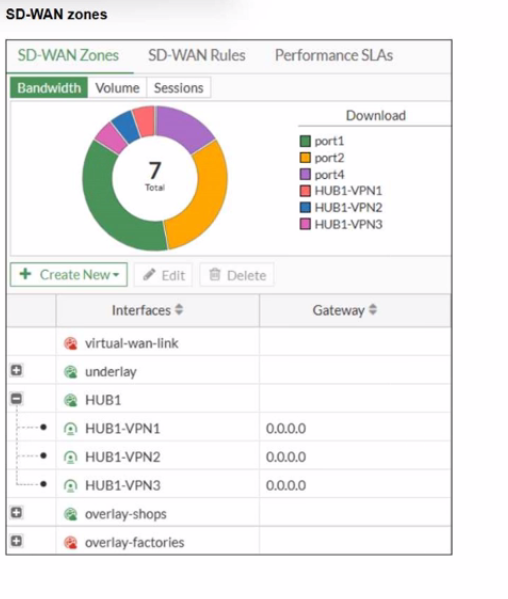
Refer to the exhibit, which shows an SD-WAN zone configuration on the FortiGate GUI. What can you conclude about the zone and member configuration on this device?
Answer : C
In the SD-WAN GUI, the absence of members in a zone is visually represented, and the Fortinet guide confirms: 'If a zone such as overlay-factories contains no members, it will be displayed as empty in the SD-WAN GUI. This may occur when the zone is reserved for future expansion, or if members have been temporarily removed for maintenance or reconfiguration. Traffic cannot be steered via an empty zone until at least one SD-WAN member is added.' Such visual cues help operators quickly assess configuration status and readiness.
Refer to the exhibit, which shows the SD-WAN rule status and configuration.
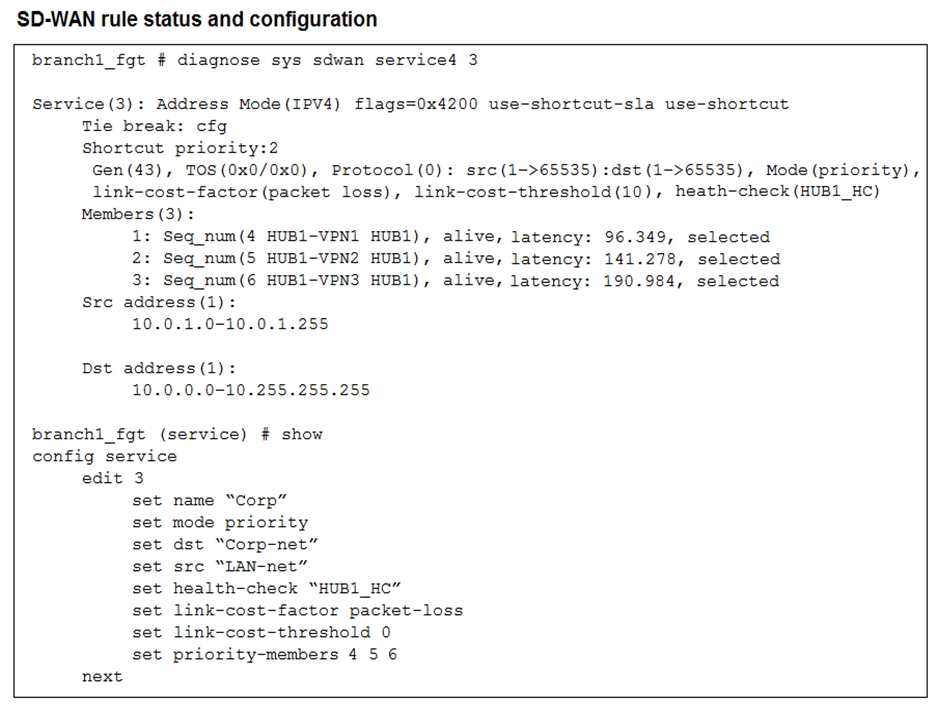
Based on the exhibit, which change in the measured latency will first make HUB1-VPN3 the new preferred member?
Answer : D
The rule is in priority mode with HUB1-VPN1 (seq 4) as the first preferred member, HUB1-VPN2 second, and HUB1-VPN3 third. Latency itself does not cause HUB1-VPN3 to become preferred unless a higher-priority member fails SLA. If HUB1-VPN1's latency exceeds the SLA threshold (here simulated by latency reaching 200 ms), FortiGate stops using it and moves down the priority list. That is when HUB1-VPN3 could become the active path.
Refer to the exhibit.
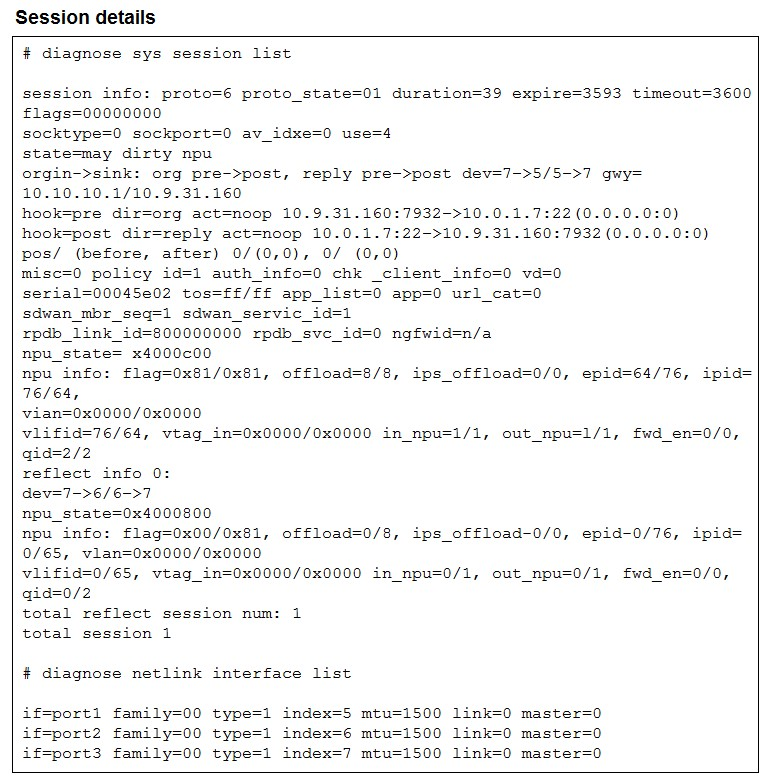
The exhibit shows the details of a session and the index numbers of some relevant interfaces on a FortiGate device that supports hardware offloading.
Based on the information shown in the exhibits, which two conclusions can you draw? (Choose two.)
Answer : B, C
The session details show the symmetric flow's original direction as port3 port2.
The asymmetric flow's reply direction is listed as port2 port3.
The administrator uses the FortiManager SD-WAN overlay template to prepare an SD-WAN deployment. Using information provided through the SD-WAN overlay template wizard, FortiManager creates templates ready to install on the spoke and hub devices.
What are the three templates created by the SD-WAN overlay template for a spoke device? (Choose three.)
Answer : B, D, E
Rules template Defines the SD-WAN rules for traffic steering.
BGP template Configures dynamic routing for overlay tunnels.
IPsec tunnel template Builds the IPsec VPN tunnels from the spoke to the hubs.
Refer to the exhibit.
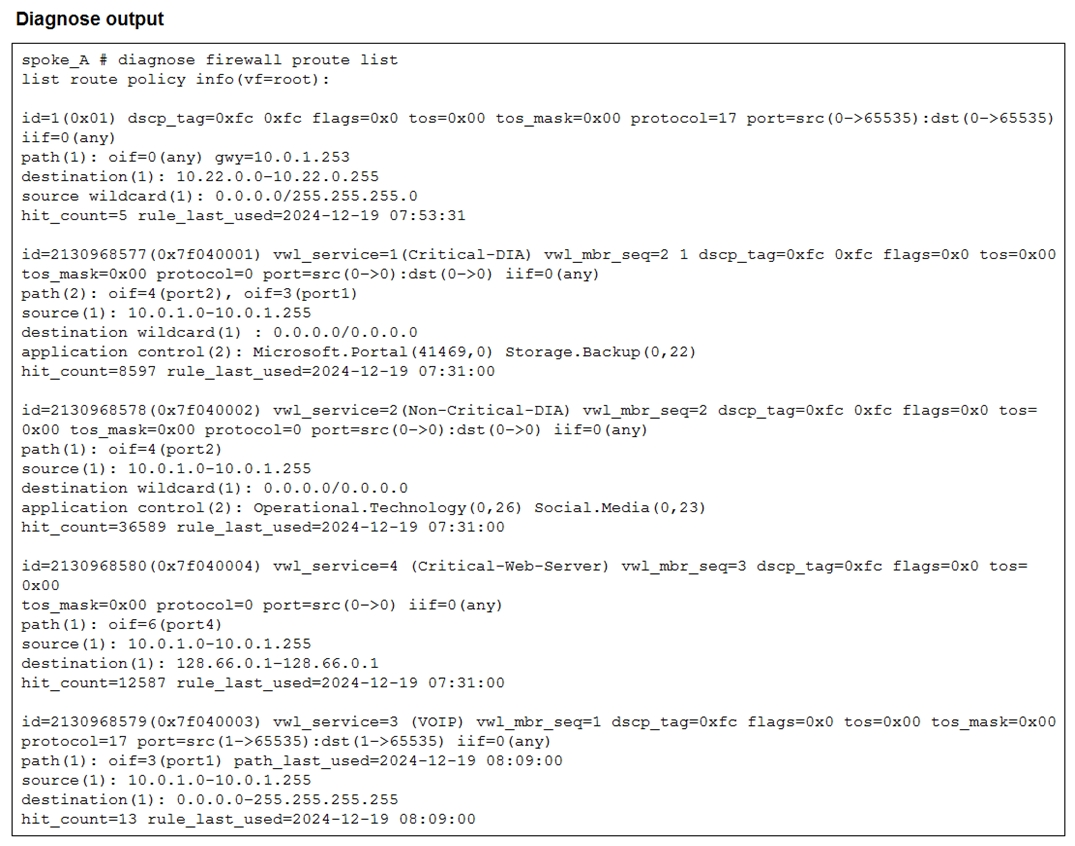
Which two conclusions can you draw from the output shown? (Choose two.)
Answer : A, D
One SD-WAN rule is defined with application categories as the destination The diagnose output shows application control matches such as Microsoft.Portal, Operational.Technology, and Social.Media, confirming that SD-WAN rules are using application categories as destinations.
UDP traffic destined to the subnet 10.22.0.0/24 matches a policy route The first entry (id=1) shows protocol=17 (UDP) with destination 10.22.0.0/24, confirming this traffic is handled by a policy route instead of an SD-WAN rule.
Refer to the exhibit.
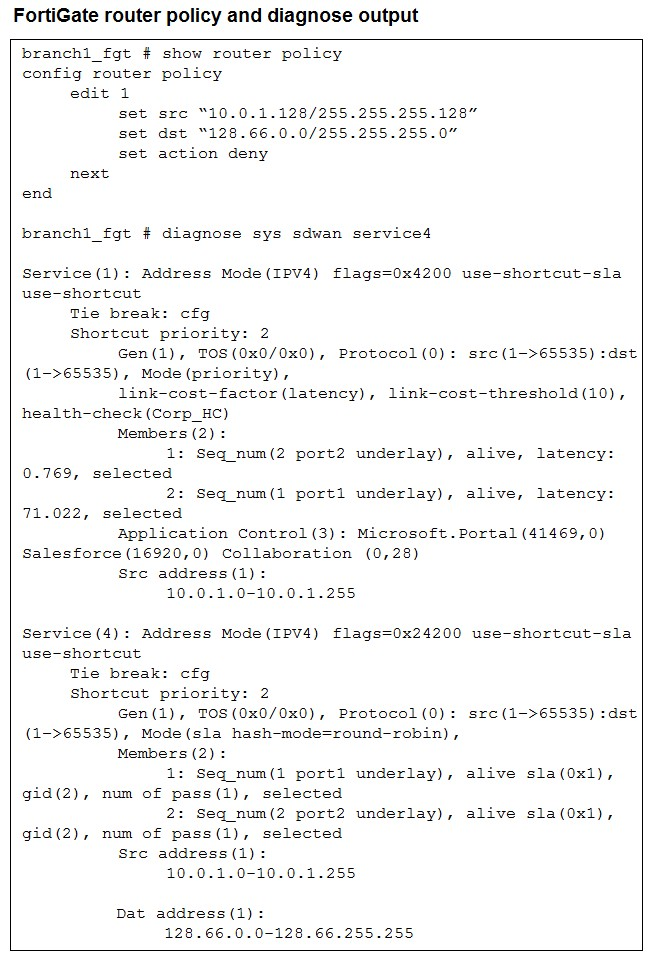
How does FortiGate handle the traffic with the source IP 10.0.1.130 and the destination IP 128.66.0 125?
Answer : C
The router policy explicitly denies traffic with source 10.0.1.128/25 (which includes 10.0.1.130) and destination 128.66.0.0/24 (which includes 128.66.0.125). Even though SD-WAN service 4 shows members (port1 and port2) alive and available for this traffic, the router policy is evaluated first and blocks it. Therefore, FortiGate drops the traffic flow.